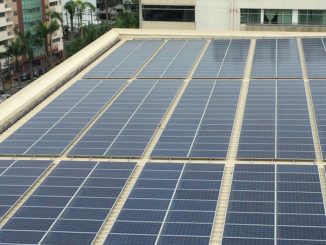Net metering is usually employed using two types of metering arrangements – unidirectional and bidirectional. A bidirectional meter displays both the energy consumed and supplied by the consumer on the same meter. In another metering system, called dual or gross metering system, two separate unidirectional meters are connected at the consumer end. The usage meter shows the electricity consumed by the consumer from the grid and the generation meter displays the energy generated by the consumer and fed into the grid. The metering market is increasingly moving towards the adoption of smart meters, which can be unidirectional or bidirectional. These meters not only bill the generation and consumption but also become an inherent source of energy data management and analytics.
Smart and advanced metering systems
Utilities are increasingly shifting towards smart and advanced metering systems to receive real-time data, which allows remote monitoring of systems and gives an analytical insight into consumption patterns. Smart meters with advanced metering infrastructure (AMI) systems enable utilities to reduce metering and data entry costs, automatically detect tampering (reducing losses), improve load forecasting and better implement the time-of-use tariff regime for different customer segments. In addition, the technology assists in faster restoration of service after fault detection, enables power quality measurement, provides reliable data, and allows remote operation of meters. Consumers can also monitor the recorded data through apps and web portals, to optimise their energy consumption and lower their energy bills.
As the country plans to install 60 GW of ground-mounted and 40 GW of rooftop solar power by 2022, it would become imperative to forecast load patterns and generation from small and distributed rooftop solar power plants. To avoid imbalances in the grid due to the inherent variability of solar energy, the two-way flow of detailed information becomes necessary. Therefore, utilities need to use this state-of-the-art technology while setting up new net metering connections.
As per an India Smart Grid Forum (ISGF) report, the total cost per meter for AMI implementation is approximately Rs 6,733, excluding taxes and duties. In addition, utilities are reeling from heavy debt and are undergoing financial restructuring under the Ujwal Discom Assurance Yojana. Therefore, the greatest barrier to widespread implementation of AMI is the lack of finance. Although costs are expected to come down with the increase in demand for smart meters, it is not going to make a significant impact. Thus, high upfront costs make the procurement of smart meters prohibitive. Further, the industry is facing the issue of limited awareness about AMI, not just at the consumer end, but also from discoms and policymakers, leading to slow implementation of the technology.
Since there are no universal standards for metering technologies, different discoms may choose to implement different smart metering technologies, resulting in disproportionately high costs. Moreover, implementation under the supervision of multiple officers and absence of a centralised authoritative team working on different aspects of smart metering in a discom, can lead to delayed and inaccurate deployment. Therefore, innovative market mechanisms, business models and policies are required for efficient installation to lower the costs of metering infrastructure.
A meter leasing model can allow the utility to lease the system for a limited period of time from banks or financial institutions that have a greater purchasing power. A service-based model can also be implemented, wherein a metering service agency (MSA) can provide expertise to the utility for project management, and operations and maintenance (O&M) for a specified duration. In addition, the MSA would be responsible for selecting and testing the equipment, the communication infrastructure and software as per the standards defined by the discom.
Going forward, smart metering technologies will play a crucial role in decreasing grid losses, improving the efficiency of power systems and creating smart cities. The existing metering technologies are likely to become obsolete with the changing energy systems and an increasing number of consumers turning into prosumers (or generators of energy). A number of pilot projects are already in the pipeline by the central and state governments to assess the implementation of smart metering systems. This reflects a positive outlook for the metering industry. Given the patchy implementation, increasing focus on energy efficiency and rise in the adoption of rooftop solar technology, there is a vast potential for smart metering in India.




